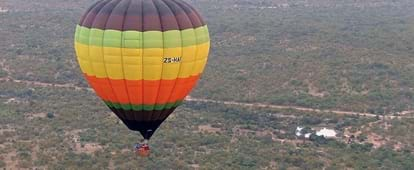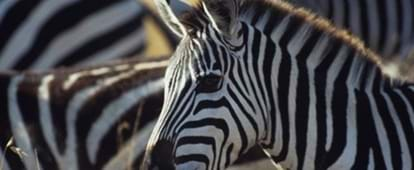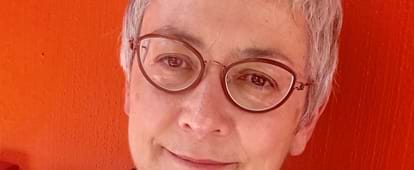By creating an account, I agree to the
Terms of service and Privacy policy
Choose your country and language:
Africa
Americas
Asia Pacific
Europe
IIn the north-eastern corner of the Pilanesberg, where the Big Five roam the plains and platinum sits in abundance under the soil, you’ll find the ancestral home of the Bakgatla-ba-Kgafela people.
Their tribal capital, the village of Moruleng, is a short three kilometres from Bakgatla Gate on the edge of the Pilanesberg National Park. The Bakgatla-ba-Kgafela have lived and worked there since the 1800s, when Kgosi Pilane settled his people at Mmasobudule on the Elands River, in the area known today as the Pilanesberg.
Life at that time wasn’t easy for the Tswana communities north of the Vaal River. They had to deal with cattle raids, inter-tribal battles, droughts, floods, locusts and disease. In 1836 the Voortrekkers (Boers) arrived in the area, looking to occupy land where they could graze their cattle and be free from British rule. The Bakgatla-ba-Kgafela and the Boers mostly lived peacefully side by side, but soon settler land claims encroached on the land occupied by the Bakgatla-ba-Kgafela and other African communities.
TThe Boers introduced a system of formal land registration. In African law and custom, land belonged to the community, not any one individual. Now they were losing much of their land to white settlers. Many African people were forced to work for the Boers in exchange for land use for their own farming activity. Boers also frequently captured black children for indentured labour.
Nonetheless, under Pilane’s son Kgamanyane, who took over the chieftainship after his father died, the Bakgatla-ba-Kgafela flourished. Even though they had lost much of their land, they had access to large areas where they could grow crops, keep cattle and build towns. Their numbers increased, as did their cattle stocks—but still they couldn’t buy land. It took a farsighted leader like Kgamanyane and friendly missionaries to work out how the Bakgatla-ba-Kgafela could secure their ancestral lands.
In the 1860s Kgosi Kgamanyane moved his capital from Mmasobudule to Paul Kruger’s farm, Saulspoort, at Moruleng, on the slopes of the Pilanesberg. In 1868, the Dutch Reformed missionary Henri Gonin bought the farm from Kruger for £900, with the Bakgatla-ba-Kgafela contributing half of that amount. The deed of sale stated that Kgamanyane, his people and their descendants would always be allowed to live there.
What no one could have realised at the time is that the land Gonin bought on behalf of the Bakgatla-ba-Kgafela was situated on top of the richest platinum-bearing reef in the world.

TToday, platinum wealth has enabled the Bakgatla-ba-Kgafela to embark on a number of significant developments. One of these is the Moruleng Cultural Precinct, developed by Totem Media, a Johannesburg-based museum and exhibition team, in close collaboration with the Bakgatla-ba-Kgafela Traditional Administration.
At the heart of the precinct lies the Mphebatho Cultural Museum, originally built as a school in 1937 by a Bakgatla-ba-Kgafela initiation regiment. The museum is split into two main areas. The first looks at Bakgatla-ba-Kgafela culture and beliefs. An introductory, multi-screen video installation explains how creation stories, traditional beliefs, healing systems and cattle and clay helped the Bakgatla-ba-Kgafela navigate their lives over centuries − and still do today. In this space, you’ll also find out more about the powers of traditional medicine and how the key life stages—birth, initiation, marriage and death—are observed and celebrated.
The museum’s second room looks at Bakgatla-ba-Kgafela history. Many of the images are photographs taken by the renowned social anthropologist Isaac Schapera, who lived with the Bakgatla-ba-Kgafela in Botswana in the 1930s. These images are drawn from an ethnographic archive held at the Royal Anthropological Institute (RAI) in London.
This room holds some fascinating stories. Among these is the tale of how Kgosi Kgamanyane was flogged by one of Paul Kruger’s soldiers for refusing to provide free (essentially slave) labour for a dam-building project. Kgamanyane then gathered his people and moved away from Moruleng into what is today Botswana, to a village called Mochudi. A small group remained in the Pilanesberg area, with the result that to this day there are two branches of the Bakgatla-ba-Kgafela, split over an international border, but with common ancestry, culture and traditions. You’ll also find out why the Bakgatla-ba-Kgafela took a strategic decision to support the British during the South African War—and how things didn’t work out quite as they had anticipated.

YYou exit the museum through a small shop into a landscape of iron-age settlement patterns—a detail of the first Kgosi Pilane’s settlement that can still be visited in the Pilanesberg National Park. You make your way past the stonewalled structures and through the landscaped terrain to a beautiful Dutch Reformed Mission Church, built in 1889 and meticulously restored. The church houses an exhibition on the impact of missionary and colonial influence on the Bakgatla-ba-Kgafela, showing how, over the years, the community has found ways for Christianity and tradition to respectfully live alongside each other.
At the top of the new church bell tower you have a vista over the precinct and the village of Moruleng. The stillness is only interrupted by the lowing of cattle, the occasional truck, the chatter of children, and the wind blowing through the veld.
Much of the work on the precinct involved local artisans and crafters, drawing on age-old, almost forgotten traditions. They brought their knowledge into a modern context and passed on skills to a younger generation. The master stonewaller of the precinct was an elderly community member, Mr Ramafoko. Stonewalling has run in Mr Ramafoko’s family for generations. As a young boy, he worked alongside his father, acquiring not only the skill, but also the patience and single-mindedness needed to become a master of his craft.
The Moruleng Cultural Precinct was officially opened in 2015. If you are planning a visit to the Pilanesberg, make sure to add a few extra hours and take yourself to this fascinating destination. The precinct is blazing a trail for rural communities across the country, and will hopefully inspire other traditional groups to be equally innovative when telling their stories and dealing with issues of identity, history, culture and the future.

AAbout the author
Beatrice Roberts is a freelance researcher and writer living in Johannesburg. The bulk of her work, which fortunately happens to be her passion, is in the heritage sector. She is part of Totem Media, a team specialising in museum and exhibition development, and has worked on numerous exhibitions for institutions like Liliesleaf, eThekwini Municipality, Nelson Mandela Foundation, the Bakgatla-ba-Kgafela Tribal Administration and others, doing research and narrative development. The best part of working in this field is connecting with “living treasures”—talking to community elders and stalwarts of our liberation struggle, and telling their incredible stories.
Related articles

